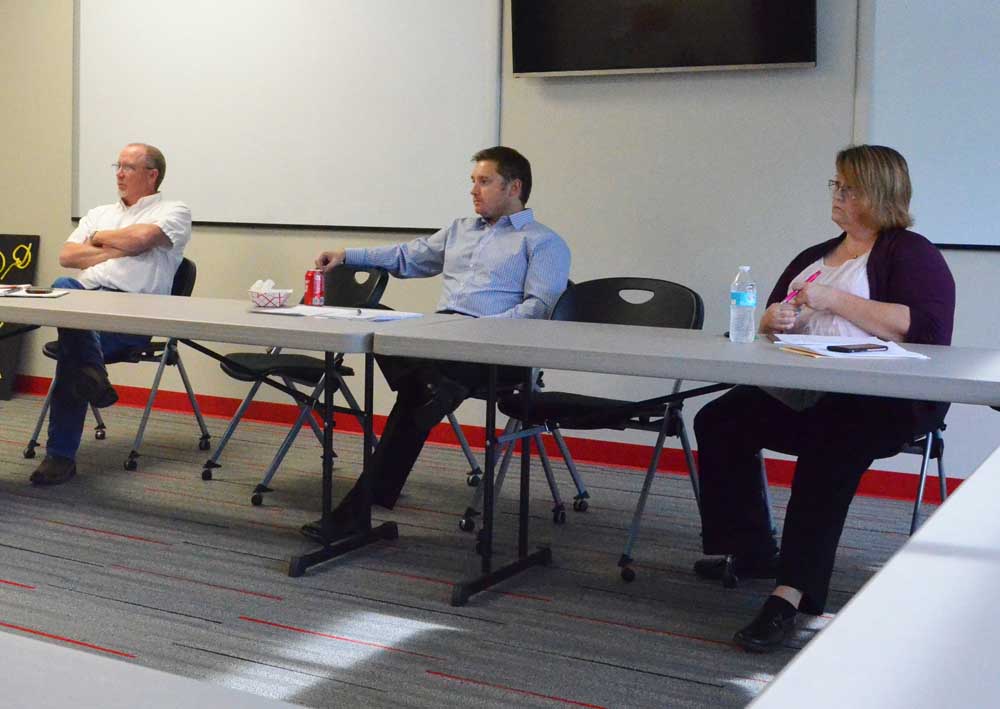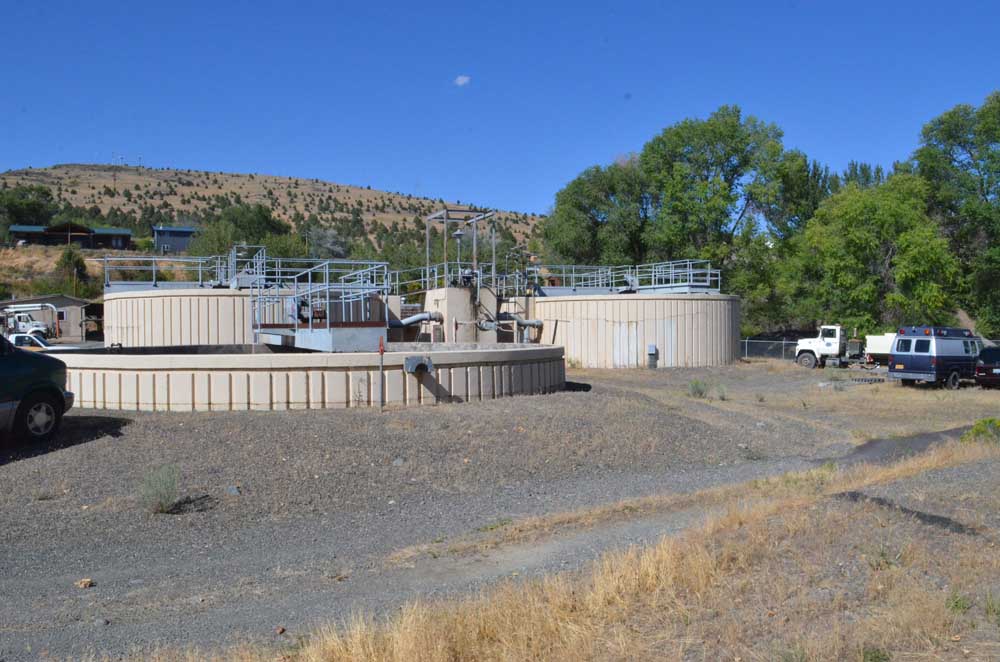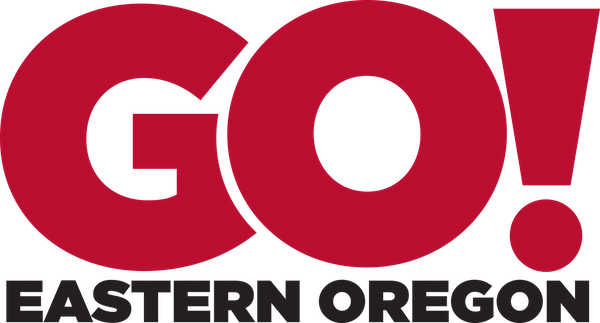Kick-starting construction
Published 12:22 pm Tuesday, May 15, 2018

- From left, Robert Waltenburg, Derek Daly and Angie Jones listen to discussion during the John Day Technical Advisory Committee's review of the proposed John Day Housing Incentives Plan and Report May 8.
Kick-starting the home construction sector in a rural economy that’s seen significant population decline over the past three decades will not be easy, but a housing incentive plan proposed by the city of John Day has the support of the state and local builders, according to City Manager Nick Green.
Trending
The city’s goal is to see 100 new homes built in the 20-year life of the program. To encourage new home construction as well as remodeling, the city will offer builders or homeowners cash incentives based on the increased assessed value of the property.
About 158 acres of suitable residential land exists in John Day for new home construction, but only five new homes have been built in the city over the past 10 years. In addition, many existing homes were constructed in the post-World War II boom and are in serious need of repair. Green noted it’s hard to find homes for sale in John Day that are in the mid-range price of around $250,000.
What’s blocking new home construction or extensive remodeling is a “cost-value disconnect,” according to the urban renewal program’s draft report. The average price of a home sold in John Day over an 18-month period in 2016 and 2017 was $88 per square foot, but the average price to build a new home is $155 per square foot — nearly twice as much.
Trending
“This cost-value disconnect discourages investments in new housing by creating an affordability gap for homebuyers and a profitability gap for homebuilders, both of whom take on significant negative equity for new home construction,” the draft program report states.
The city’s proposed urban renewal district encompasses about 178 acres of land in John Day, including rights-of-way, amounting to about 20 percent of the city’s $100 million total assessed value.
Six of the 12-member John Day Technical Advisory Committee attended the committee’s first meeting May 8 to review the proposed program. Green also presented the program to the Grant County Court on May 9.
Two incentive programs have been proposed to encourage improvements to the city’s housing stock. Under the New Home Incentive Program, the city would rebate 7 percent of the increased assessed value of a property to the property owner and waive system development charges for water and sewer.
There would be no limit on the number of times a person could apply for benefits under the program, Green said. A contractor could submit multiple properties or multiple phases for a single project. Manufactured homes would not be eligible, and “tiny homes” were not considered, he said.
According to the program’s draft report, the average assessed value of new homes in John Day is $208,000, and the average assessed value of undeveloped lots is $30,000, giving an average net increase of $178,000 for a new home.
With an average rebate of $12,460 and system development charges of $7,400 per lot, the total incentive for new homes would average $19,860. The report estimates that about 80 percent of undeveloped lots in the district will have system development charges.
Under the Existing Home Remodel Incentive Program, the city would rebate 15 percent of the increased assessed value of a property to the homeowner. The minimum assessed value increase to be eligible for the rebate would be $10,000. The draft program report assumes an average of $30,000 per remodel, giving an average rebate of $4,500.
Green said the city would like to see facade improvements, but that type of remodeling typically would not increase a property’s assessed value, so the city might need to consider a different program to promote facade improvement.
The program is market-driven, and local builders were asking “how soon” the program would start, Green said.
Bruce Ward, a local building contractor and member of the Technical Advisory Committee, noted that local contractors typically build pre-sold homes and few spec homes to place on the market because contractors carry much of the financial risk.
The city would recoup its incentive payments by using tax revenue on the increased assessed value resulting from new home construction or remodeling. The city expects the incentives for each property would be paid back in seven years.
The city would not pay the incentives until the increase in assessed value shows up on the tax rolls, so there is no risk to John Day, Green said. The program’s projected estimate is for three new homes and three remodels per year to 2026, at which time those numbers could increase.
Tax payments from property inside the urban renewal district to the eight taxing jurisdictions — including the county, Grant School District 3, Grant County Education Service District and Blue Mountain Hospital –— would be frozen at the level when the program is initiated. Tax revenue on the increased assessed value resulting from the program would not become available to these taxing jurisdictions until the incentive for each property is paid back.
“While the other tax districts in the city do not receive immediate tax benefits from the area, these agencies will realize an increase in their tax revenue that would not exist but for the creation of the incentive program,” the program’s draft plan states.
According to the projected tax impact in the program’s draft report, the county could see a $747,402 increase in tax revenue at the end of 20 years if the program is successful. The school district could see $974,012, and the hospital could see $866,671.
In addition, the school district could benefit from additional school-aged children, the hospital could benefit from new patients and the local economy could benefit from more money spent at stores and businesses.
Under state law, John Day does not need approval by the Grant County Court or other taxing jurisdictions to implement the urban renewal district, but voters could bring forward an initiative to change the district.
If the program is unsuccessful in spurring new home construction, the city will look to see what went wrong, but there would be no loss to the city and no loss to other taxing jurisdictions, Green said. The city would consider if there was enough buildable land, if the program was sufficiently promoted or if the incentive was too small.
If the program is “wildly successful,” the city would need a line of credit to cover the incentives, but significant new development would be good for the economy and the affected taxing jurisdictions, Green said.
The John Day housing program is supported by the Oregon general fund through the Department of Land Conservation and Development, which considers the urban renewal district a pilot program.
The John Day Urban Renewal Agency, which is composed of John Day city councilors, will oversee the program. The agency will hold its first meeting May 22. The John Day Planning Commission will review the program May 24. The city council will hold a public hearing and vote to adopt the proposed program on June 12.









